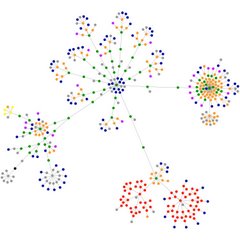Considering the current trend toward the degradation and the urban disintegration (sprawl), the diffusion of the information technologies (IT) can contribute properly to reinforce the integration and cohesion of “social capital” in the cities and urban conglomerations or in opposite way to enlarge the digital gap and the urban exclusion.
Progressively ways of local self-organization are being verified called “glocalization” that represent extensively an intent to intercept the emerging global dimension of the market through the directly involved actors (stakeholders) and related consensus building for training courses and strategies of territorial promotion and activities localized in it, for example the production of goods and services.
The new technologies have generated digital environments in the cities, but not necessarily accessible at urban territory and hinterlands these digital environments are located mainly in private spaces as has been the case of the technology Wi-Fi that had allowed the increase of hotspots especially located at: hotels, restaurants, coffees, shopping centers, airports, communities of business and universities.
Then it’s possible to realize about a lack of the “public digital space” intended as traditional squares, sidewalks, parks and open spaces because these aren’t fully integrated to the new technologies environments.
Sunday, May 27, 2007
Subscribe to:
Comments (Atom)
